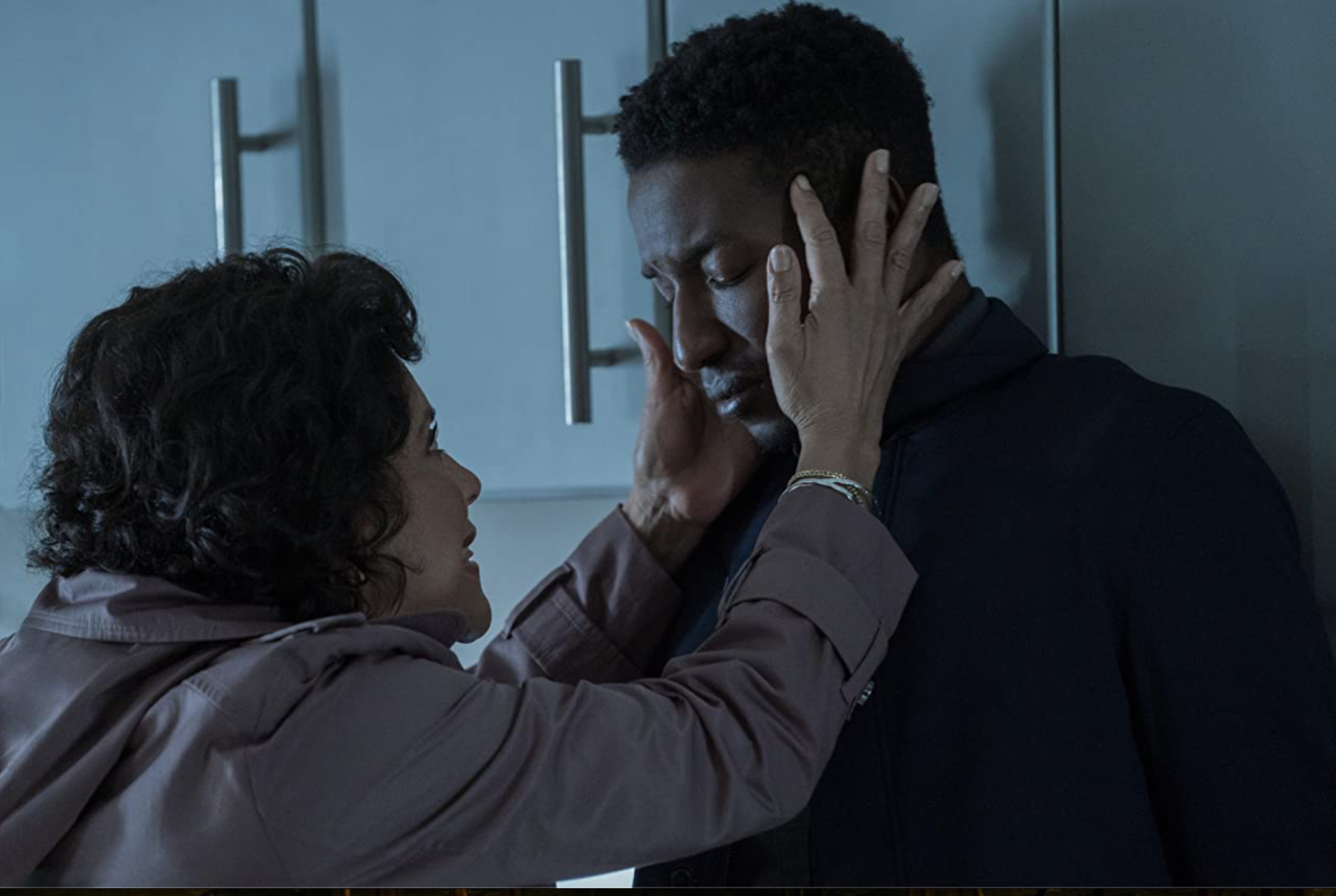If you like tacky horror movies, Amazon Prime is the site to stream this Halloween. Its set of films from the horror collection Welcome to the Blumhouse (2020) went live earlier this month, providing an entertaining and somewhat spooky way to spend an evening. Blumhouse Productions, a company that produces many famous horror movies such as Insidious (2010) and The Purge (2013), collaborated this year with other studios to produce a campaign for streaming. Four films make up the project—The Lie, Black Box, Nocturne, and Evil Eye—and while they all possess predictable twists that leave little room for surprise, they are short, star-studded, and not a total waste of time.
The Lie is perhaps the campaign’s weakest link, in terms of both fright factor and entertainment value. More thriller or suspense than horror, the movie spends too much time on drab scenes and the anticipation it creates throughout culminates in a somewhat unsatisfying way: viewers never see the final fallout. A major problem is that Joey King, arguably the movie’s star, delivers an unconvincing performance as 15-year-old Kayla, who presumably pushes her friend off a bridge, causing her death at the beginning of the film. Her character is hard to empathize with even through the process of her parents (Peter Sarsgaard and Mireille Enos) going to great lengths to protect her from being suspected of murder. King’s iffy performance makes the parental struggle to shield her as well as the film’s plot twist less impactful and realistic, despite the movie focusing heavily on the kind of real-world fear that has audiences contemplating what they would do in the characters’ position.
In a practically opposite take on the genre, almost like something out of a Black Mirror episode, Black Box blends sci-fi and futuristic technology with horror in a way that is nearly existentialist. Following the trials of Nolan Wright (Mamoudou Athie) as he tries to retrieve his memories after undergoing an accident, the movie looks into the ways that psychology and science fiction converge on the issue of amnesia. Athie’s performance is multifaceted in a way that cannot be explained while staying spoiler-free because of the twists the movie takes. The central plot twist is in fact the movie’s greatest triumph because it starts to raise questions about things that are truly scary—perhaps the most frightening aspect of Black Box is that it asks audiences to consider bodily autonomy and the ethics of a mind transplant. Is who we are tied more to our bodies or our minds? Do our minds die?
Of the films in Welcome to the Blumhouse, Nocturne feels the most like a typical horror movie. Full of anticipatory scoring and supernatural imagery, it follows competition between twins Juliet and Vivian (Sydney Sweeney and Madison Iseman) at an elite arts high school. With a push from a mysterious notebook she finds, Juliet rises to the top as a pianist. Sweeney’s performance is, as always, a standout and she convincingly shows a teenage girl’s process of unraveling due to demonic influences. Though the film leaves its supernatural elements irritatingly unexplained, their inclusion makes Nocturne different from the movies that came before it in the campaign. It is notably eerie, and its use of classical music to underscore major events certainly earns it some points. At its core, it is a look into the teenage mind and the near possession-like ways people act when competing with others.
Evil Eye, too, exists within the realm of the supernatural more than The Lie or Black Box. This film, though, works with culture and religion as driving factors, following a devout mother’s (Sarita Choudhury) journey as she fears her daughter (Sunita Mani) has begun dating the reincarnation of a man who once tried to kill her. Examining the mother-daughter relationship, this film really delves into the fear of what cannot be controlled. For parents, this can manifest in their children choosing to be around dangerous people. The movie is not super fast-paced and could use a bit more action, but all in all, it taps into something real and scary: we can never really know someone else’s intentions.
One massive success of the campaign is its inclusion of diverse concepts and voices within the realm of horror. Each film explores a different aspect of what the genre can mean, from real-life horrors to religiously-themed ones to the explicitly scientific or supernatural. Additionally, the campaign uplifts women and BIPOC as directors, actors, and creatives more broadly. It tells stories tied to various cultures and their belief systems as well as centering experiences of women and BIPOC in its storytelling. Horror films can tend to showcase the same types of people and stories over and over, and the films in Welcome to the Blumhouse subvert this typical structure in a way that feels refreshing and unforced.
Another success the campaign enjoys is the thematic connection it provides in telling stories centered around families. In The Lie, the action revolves around a set of parents and their daughter; in Black Box, it revolves around two parent/child relationships. Nocturne looks at competition between teenage twin sisters, and Evil Eye is, at its core, a tale of a mother protecting her daughter. These films all examine the lengths we will go to in familial relationships—whether intentionally or not. The theme makes the campaign feel cohesive and gives the films a throughline.
The truth is, though, that none of the movies are great. A central problem with the campaign is that none of them really dazzle or would draw large audiences as standalone films. Most of them are simply not frightening, which is not high praise for horror. Not a single one of them will be keeping viewers up at night thinking about the villain or the supernatural phenomena that haunt these narratives. They’re certainly not the kind of scary movies that stick with you, and if you are looking to be spooked, you might be better off choosing something else to watch. These movies are not chock-full of surprising jump scares or of creepy ideas that will haunt your nightmares for weeks to come—while well-directed, they are a bit cheesy and include little truly frightening imagery.
But even though none of the movies from Welcome to the Blumhouse are great stand-alone films, they are worth watching, especially for someone who loves the horror or thriller genres. Different enough from each other that they never feel repetitive, these films each are valuable in their own way—and the thematic connections between them make them feel a little less arbitrarily thrown together. While the films themselves won’t blow viewers away, they are entertaining, and supporting them means supporting great creative teams.





